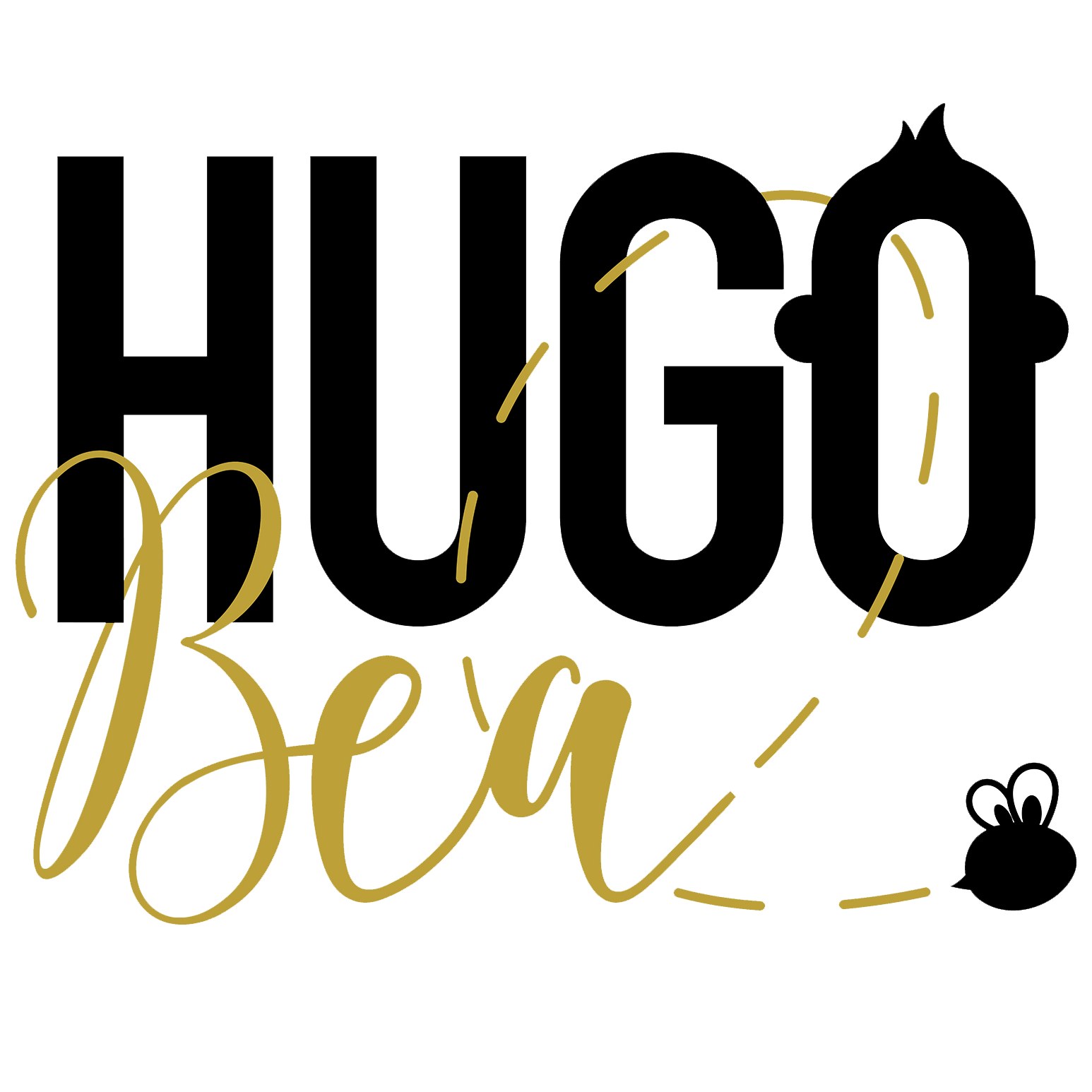
WHAT IS BRAND DESIGN?
Brand design, including creating logos, banners, icons, and even just setting up your slogan, is one of the main aspects of starting a business. The brand design is what people look for when they think of your brand. Think yellow arches for McDonald’s, or the blue and yellow colours of the IKEA logo. Both of these are iconic and are quickly related to their brand – this is exactly what you want from brand design!
WHY WOULD I NEED BRAND DEVELOPMENT?
Following on from the explanation of brand design, brand development involves continuing to create branding and making it well-known and well-published. Developing your brand can be endless if there is always changes to be made, so outsourcing this task to people who know what they are doing, like our team here at HUGOBea, can take a lot of the pressure off your shoulders.
Brand design is the visual and aesthetic aspect of branding. It’s what helps a brand stand out and be easily recognisable. The significance of brand design lies in its ability to convey a company’s values, message, and personality through visual elements. It’s not just about looking good; it’s about communicating the essence of the brand without words.

DESIGN IN YOUR MARKETING STRATEGY
Consistency Across Channels: Ensure that your brand design is consistently represented across all marketing channels, whether it’s digital advertising, social media, email marketing, or traditional media. This consistency helps in building brand recognition and recall.
Reflecting Brand Values: Your marketing campaigns should reflect the core values and personality of your brand. This alignment ensures that your marketing messages resonate with your target audience and reinforce your brand’s positioning.
Leveraging Visual Identity: Use your brand’s visual elements, like logos, colour schemes, and typography, strategically in your marketing materials to create a visual connection with your audience.
Incorporating Brand Messaging: Your brand’s tone of voice and messaging style should be evident in your marketing content. This helps in maintaining a consistent brand voice across all touchpoints.
KEY PARTS OF BRAND DESIGN
Logo: The centrepiece of a brand’s design, a logo is a visual symbol that represents the company. It should be distinctive, memorable, and reflective of the brand’s personality.
Colour Scheme: Colours evoke emotions and associations. Choosing the right colour palette can help reinforce the brand’s message and connect with the audience on an emotional level.
Typography: The style of the text used in the brand’s materials, from the logo to marketing collateral, should be consistent and reflect the brand’s character.
Imagery: This includes photographs, illustrations, and any other visual content that supports the brand’s identity. Consistent imagery helps in building a cohesive brand look.
Case Study
NETWORK NOTWORK CIC
From logo design to website design to brochure design, copywriting and PR, we created NETWORK NOTWORK CIC from scratch. Learn about the idea, concept and branding in this case study.
Details
Compay Name: NETWORK NOTWORK CIC.
Date: Jan 2024
Website: www.networknotwork.co.uk
Learn about our all-encompassing company start-up marketing and design process. This case study will take you from the initial idea of NETWORK NOTWORK CIC right through to the finished product and their ongoing support package.
CASE STUDIES: OUR CLIENTS
Browse some of our brand design projects and see how we can co-create your ideal company image.




CREATING A UNIQUE BRAND IDENTITY
A unique brand identity is more than just a marketing advantage; it’s a necessity. A distinct brand identity helps a business stand out in a crowded marketplace and can be the deciding factor for consumers when choosing between similar products or services. This uniqueness in brand identity is not just about visual elements; it’s about embodying a personality that resonates with your target audience.
To develop a distinctive brand personality, consider the following strategies:
Understand Your Unique Value Proposition: Clearly define what sets your brand apart from competitors. This could be your product quality, customer service, pricing, or company values. Your unique value proposition should be the foundation of your brand identity.
Reflect Your Brand’s Core Values: Your brand identity should be a reflection of your business’s core values and beliefs. These values should be evident in every aspect of your brand, from your marketing materials to your customer interactions.
Create a Consistent Visual Language: Consistency in your visual elements, such as logos, colour schemes, typography, and imagery, helps in reinforcing your brand identity. Ensure that these elements are not only distinctive but also consistently used across all platforms.
Develop a Unique Tone of Voice: The way your brand communicates, including the language and tone used in your content, should be unique to your brand. Whether it’s professional, friendly, quirky, or serious, your tone of voice should be consistent across all channels.
EMOTIONAL CONNECTION AND BRAND STORYTELLING
The power of emotional connection in brand development cannot be overstated. Brands that successfully connect with their audiences on an emotional level can foster loyalty and long-term customer relationships. This emotional connection is often achieved through effective brand storytelling.
Crafting a Compelling Brand Story: Your brand story should be more than just the history of your business. It should be a narrative that connects your brand’s past, present, and future with your customers’ needs and aspirations. A good brand story is authentic, relatable, and evokes emotions.
Using Storytelling to Engage Your Audience: Incorporate storytelling into your marketing and branding efforts. This can be done through various mediums such as your website, social media, advertising, and even packaging. Your story should be engaging and make your audience feel a part of your brand’s journey.
Highlighting Customer Stories: Sometimes, the most powerful stories are those of your customers. Sharing customer experiences, testimonials, and case studies can be an effective way of storytelling that not only showcases the value of your brand but also builds trust and credibility.
EVALUATING AND EVOLVING YOUR BRAND
Regular evaluation and adaptation of your brand are essential in an ever-changing market landscape where consumer preferences and trends continuously evolve. To stay relevant and effective, it’s important to employ various methods to measure the effectiveness of your brand and be willing to evolve over time.
Measuring brand effectiveness can be approached in several ways. Conducting brand awareness surveys provides valuable insights into how well your brand is recognised and recalled among your target audience. Monitoring social media is another powerful tool; by analysing engagement, sentiment, and mentions, you can gauge the public perception of your brand. Website analytics also play a crucial role. Tracking metrics such as traffic to your ‘About Us’ page, session duration, and bounce rate on brand-related content can offer a deeper understanding of how users interact with your brand online.
Adapting and evolving your brand over time is equally important. This involves staying current with market trends and being responsive to shifts in consumer behaviour. Regularly reviewing and potentially updating your visual identity, refining your messaging, or reevaluating your brand values can keep your brand fresh and relevant. Being open to customer feedback and willing to make changes based on this input is crucial for maintaining alignment with your audience’s needs and preferences. Innovation should not be shied away from; exploring new marketing channels, experimenting with new messaging strategies, or even considering a complete rebranding are all ways to keep your brand dynamic and engaging.
In essence, the continuous evaluation and evolution of your brand are key to maintaining a strong and relevant presence in the market. By staying attuned to changes and being willing to adapt, your brand can continue to resonate with your audience and meet your evolving business objectives.



